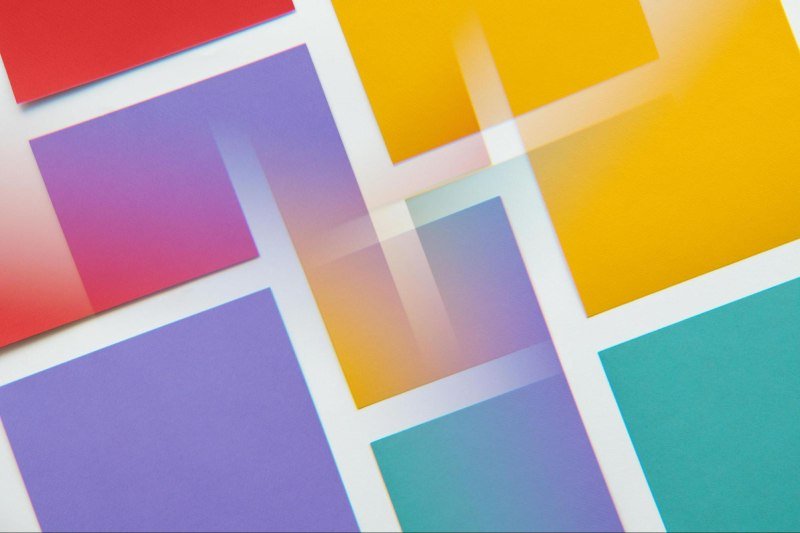
Have you ever wondered how a striking logo can make a company memorable? Or how effective visual communication can boost customer engagement? In today’s digital landscape, where a staggering 94% of first impressions are design-related, the role of graphic design in business cannot be overstated.
Graphic design is an essential aspect of modern business. In an era where digital presence dominates, the ability to communicate visually has become a powerful tool for companies looking to engage audiences, convey messages, and build brand identity. According to recent studies, about 70% of consumers say they feel more connected to brands with strong visual content. From logos and websites to advertisements and social media graphics, effective graphic design can elevate a business’s image and drive customer engagement.
In this article, we’ll explore key graphic design techniques that are vital for successful visual communication in business and how mastering them can lead to lasting impressions and business growth.
1. Understanding the Basics of Graphic Design
Before diving into advanced techniques, it’s crucial to have a grasp of the foundational elements of graphic design. These elements include line, shape, color, typography, texture, and space. Understanding how to manipulate these elements allows designers to create visuals that not only look appealing but also serve a functional purpose.
Line can direct the viewer’s attention and imply motion, while shape can convey ideas or reinforce a message. Color plays a huge role in branding, influencing emotions and perceptions. Typography isn’t just about selecting fonts—it’s about ensuring the text complements the design, aiding in readability while conveying tone. Texture adds depth and richness to visuals, and space (or white space) helps balance the design and ensures it doesn’t feel cluttered.
By combining these elements thoughtfully, designers can craft visuals that are both aesthetically pleasing and effective in communication.
2. The Role of Visual Hierarchy in Design
One of the most important techniques in graphic design is establishing a clear visual hierarchy. Visual hierarchy refers to the arrangement of design elements in a way that guides the viewer’s eye and emphasizes the most important information first.
Effective use of visual hierarchy ensures that viewers can easily navigate through the design, understanding the message without confusion. Key tools for creating visual hierarchy include:
- Size: Larger elements tend to draw more attention, so designers often use size to emphasize the most important aspects of a design.
- Contrast: Strong contrasts between elements help highlight key messages. This could be through the use of color, font weight, or even texture.
- Positioning: The placement of elements within the design also affects how the viewer perceives them. Items placed at the top or center of the design often gain more attention.
- Color and Typography: Using bold or distinctive colors and fonts for certain elements can create contrast and guide the viewer’s eye through the content.
A strong visual hierarchy makes designs more digestible and increases their effectiveness in conveying business messages. Whether it’s an email marketing campaign or a website homepage, visual hierarchy helps structure the information in a way that leads the viewer to act.
3. Consistency in Branding

Consistency is a cornerstone of effective graphic design, especially in business. A brand is more than just a logo or color palette—it’s a visual language that needs to be coherent across all touchpoints. This consistency helps build recognition and trust with the audience.
When designing for a business, it’s important to ensure that all elements align with the company’s established brand guidelines. This includes the correct usage of logos, fonts, colors, and design styles. Whether designing a business card, a website, or social media posts, the visuals should feel like they are all part of the same identity.
Having a consistent visual language helps businesses create a strong, memorable impression. For instance, companies like Apple and Coca-Cola are prime examples of brands that excel at consistency. Their design choices are instantly recognizable and communicate their brand ethos.
4. Typography: More Than Just Fonts
Typography is one of the most powerful tools in a graphic designer’s toolkit. But it’s not just about choosing fonts that look good—it’s about using typography to enhance the message and ensure clarity.
For businesses, typography serves multiple functions:
- Brand Personality: The right typeface can communicate a brand’s personality. A tech company might opt for sleek, modern fonts, while a luxury brand might choose elegant, serif fonts.
- Readability: Typography can either aid or hinder readability. A good designer will ensure that the typefaces used are legible across different platforms, especially on mobile devices where space and screen size can be limiting.
- Tone and Mood: The choice of fonts can evoke different emotions. Bold fonts may convey strength or confidence, while script fonts may feel more personal or sophisticated.
Good typography is about balance—combining fonts, size, spacing, and alignment in a way that enhances the message and makes it more effective. It also involves being mindful of legibility and accessibility to ensure that the text reaches the widest audience.
5. Color Theory and Its Impact on Business

Color is a fundamental component of graphic design. It affects mood, emotions, and perceptions, and is closely tied to branding. Different colors evoke different feelings and associations, which is why understanding color theory is essential for business design.
- Red: Often associated with passion, excitement, and urgency, red is a popular color for sales and promotions.
- Blue: Conveying trust, stability, and professionalism, blue is commonly used in corporate and tech branding.
- Green: Representing nature, health, and sustainability, green is a go-to for eco-friendly brands and health-related industries.
- Yellow: Bright and cheerful, yellow evokes optimism and energy. It’s often used in calls to action.
- Black and White: Timeless and elegant, black and white can communicate sophistication and clarity.
Understanding the psychology behind each color can help businesses choose the right palette for their brand. A carefully curated color scheme enhances brand identity and ensures the design resonates with the target audience. For example, an eco-conscious company might opt for green and earth tones, while a tech company might choose blue and gray for a more professional look.
6. User-Centered Design: Prioritizing the Audience
In business, graphic design is not just about making something look good—it’s about creating something that works for the audience. User-centered design focuses on understanding the needs, behaviors, and preferences of the target audience to create designs that are both functional and appealing.
This approach can be applied across various design projects:
- Websites: A user-centered website ensures that the layout is intuitive, the navigation is easy to follow, and the design is responsive to different devices and screen sizes.
- Advertising: Effective advertisements are designed with the audience in mind, whether that’s using the right language, imagery, or calls to action that resonate with the viewer.
- Product Packaging: Packaging design should consider both the aesthetic appeal and the functionality, ensuring that it’s easy to open, informative, and aligned with the brand’s identity.
In business, user-centered design ultimately improves conversion rates and customer satisfaction. When customers find a website easy to use or an ad visually engaging, they’re more likely to take the desired action—whether it’s making a purchase or sharing content.
7. Responsive Design: Adapting to All Devices
As mobile usage continues to grow, it’s crucial for graphic designers to create responsive designs that adapt to different devices and screen sizes. Responsive design ensures that your visuals look great and function properly, whether viewed on a desktop, tablet, or smartphone.
For businesses, this is especially important in areas like web design and email marketing. A responsive website automatically adjusts to fit the screen, providing a smooth user experience on any device. Similarly, email campaigns that are optimized for mobile devices will reach a wider audience and avoid the frustration of difficult-to-read text or distorted images.
Responsive design not only enhances the user experience but also plays a role in search engine optimization (SEO). Google, for example, ranks mobile-friendly sites higher in search results, making it even more important for businesses to prioritize responsive design.
8. Incorporating Visual Storytelling
One of the most powerful ways to communicate a message through graphic design is by using visual storytelling. This technique involves using images, graphics, and design elements to tell a story that resonates with the audience and supports the brand’s message.
For businesses, visual storytelling can take many forms:
- Infographics: These combine visuals and data to tell a compelling story in a clear, digestible format.
- Video and Animation: Using motion graphics or short video snippets can engage audiences and explain complex concepts more effectively than static images.
- Illustrations: Custom illustrations can bring personality to a brand and help convey emotions or ideas in a more relatable way.
By using visual storytelling, businesses can create a deeper connection with their audience. A strong narrative supported by thoughtful design can evoke emotions and motivate action, leading to better customer engagement and brand loyalty.
9. Staying Current with Design Trends
In the fast-paced world of graphic design, it’s important to stay current with emerging trends. While timeless design principles are essential, incorporating modern design elements can help businesses stay relevant and fresh.
Some current design trends include:
- Minimalism: Clean, simple designs that focus on essential elements and negative space.
- Bold Typography: Large, eye-catching typefaces used as a primary design element.
- Abstract Illustrations: Illustrations that are stylized or abstract, often with vibrant colors and playful elements.
- 3D and Motion Design: Adding depth and motion to designs to create a more immersive experience.
By incorporating these trends, businesses can keep their designs fresh and appealing to a modern audience. However, it’s important to balance trendiness with brand consistency to ensure that the design remains true to the company’s identity.
10. Location-Based Practices: Tailoring Design to Local Markets
Understanding the cultural and demographic characteristics of your target market is essential for creating designs that resonate with the audience. Location-based practices involve adapting your design choices to fit the preferences, values, and trends of specific regions. For businesses operating in distinct locations, this approach can significantly enhance engagement.
For instance, innovative graphic design in Perth, a vibrant city known for its outdoor lifestyle and eco-consciousness, often incorporates elements that reflect these values. Designers in this area may emphasize earthy tones, nature-inspired elements, and minimalist aesthetics to align with the region’s appreciation for sustainability and natural beauty. By understanding the local context, businesses can create visuals that not only speak to their audience’s preferences but also strengthen their connection to the community.
11. The Future of Graphic Design in Business
As technology continues to evolve, so does the field of graphic design. The future of design lies in integrating new tools and platforms, such as artificial intelligence, augmented reality (AR), and virtual reality (VR), to create more dynamic and interactive visual experiences. These innovations will allow businesses to engage their audience in novel ways, whether through immersive product demonstrations or personalized marketing campaigns. Moreover, as digital spaces continue to dominate, designers will need to stay adaptable, keeping up with emerging trends while maintaining a strong foundation in the timeless principles of design. The future is exciting, and for businesses that embrace these advancements, the potential for growth and connection with customers is limitless.
Conclusion
Graphic design is more than just creating pretty pictures—it’s about using visual elements to communicate ideas, build brand identity, and connect with customers. By mastering key techniques such as visual hierarchy, consistency, typography, color theory, user-centered design, and visual storytelling, businesses can create designs that are not only aesthetically pleasing but also effective in conveying their message.
In today’s competitive business world, investing in quality graphic design is a smart decision. Well-executed designs have the power to attract attention, foster trust, and ultimately drive business success. Whether you’re designing a logo, a website, or a marketing campaign, the principles of effective graphic design can set your business apart and ensure your message resonates with your target audience.